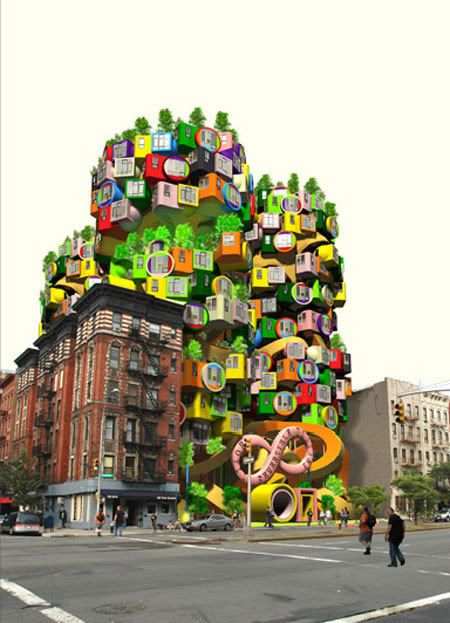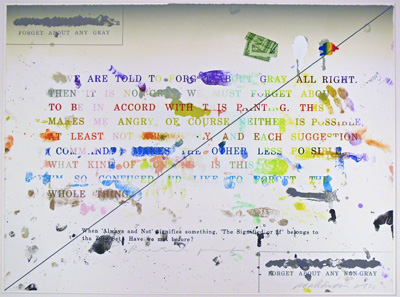Shusaku Arakawa
Shusaku Arakawa (Japanese荒 川 修 作, Shusaku Arakawa, born July 6, 1936 in Nagoya, Japan, † 18 May, 2010 New York City ) was a Japanese painter, printmaker and architect.
Life and work
Shusaku Arakawa studied mathematics and medicine at the University of Tokyo and then art at the Musashino Art College. Initially he worked as an artist with abstract prints, also in Dada style. He lived since 1961 in New York City.
Arakawa worked since 1963 with his partner Madeline Gins ( 1941-2014 ). Together they founded the Architectural Body Research Foundation. In 1968, he was with graphics participants in the documenta 4 in Kassel. He was represented at the Documenta 6 in 1977 as a participating artist. In 1970 he was represented at the Venice Biennale and in 1978 a major exhibition at the Stedelijk Museum in Amsterdam.
Arakawa designed with his partner known residences ( Reversible Destiny Houses, Bioscleave House, Shidami Resource Recycling Model House ) and parks ( Site of Reversible Destiny Yoro - ). They developed their own theory with practice reacted about the relationship between man and the outside world, elaborated on in her book: Architectural Body. Arakawa and Gins are, together and separately, the authors of numerous books and exhibition catalogs.
Literature and sources
- IV documentation. International Exhibition; Catalogue: Volume 1: ( painting and sculpture ); Volume 2: (graphics / objects ); Kassel 1968.
- Shusaku Arakawa, Madeline Gins: Mechanism of Meaning: ( work in progress; 1963-1971 ), Munich 1971 ISBN 3-7654-1439-5.
- Dagmar Buchwald (ed.): Never Die! Architecture against death, Madeline Gins and Arakawa. JOVIS Verlag Berlin 2008, ISBN 978-3-939633-51-8.








_large.jpg)

